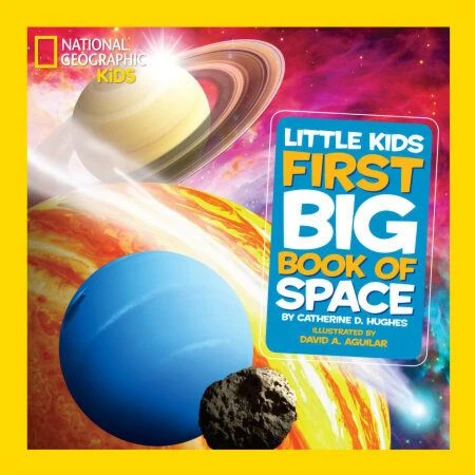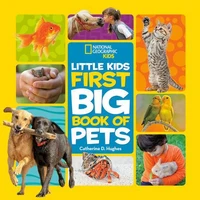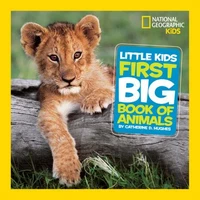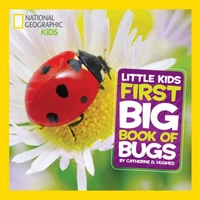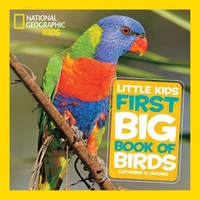National Geographic Little Kids First Big Book of Space
Par : ,Formats :
Disponible dans votre compte client Decitre ou Furet du Nord dès validation de votre commande. Le format Epub fixed layout protégé est :
- Compatible avec une lecture sur My Vivlio (smartphone, tablette, ordinateur)
- Compatible avec une lecture sur liseuses Vivlio
- Pour les liseuses autres que Vivlio, vous devez utiliser le logiciel Adobe Digital Edition. Non compatible avec la lecture sur les liseuses Kindle, Remarkable et Sony
- Non compatible avec un achat hors France métropolitaine
 , qui est-ce ?
, qui est-ce ?Notre partenaire de plateforme de lecture numérique où vous retrouverez l'ensemble de vos ebooks gratuitement
Pour en savoir plus sur nos ebooks, consultez notre aide en ligne ici
- Nombre de pages128
- FormatEpub fixed layout
- ISBN978-1-4263-2574-8
- EAN9781426325748
- Date de parution06/07/2016
- Protection num.Adobe DRM
- Taille64 Mo
- Infos supplémentairesepub
- ÉditeurNational Geographic Kids
Résumé
Get ready to blast off on an outer space adventure! Featuring stunning illustrations and engaging interactivity, this reference book will tap into 4-to-8-year-olds' curiosity about everything under the sun and beyond. This beautiful book is the latest addition to the National Geographic Little Kids First Big Book series. These colorful pages will introduce young children to the wonders of space, with out-of-this-world illustrations by David Aguilar and simple text that is perfect for beginning readers or for reading aloud.
The book will explain basic concepts of space, beginning with what is most familiar to kids and expanding out into the universe. Chapters include: . Chapter 1 focuses on the Earth, moon, and sun. . Chapter 2 introduces kids to the other planets in our solar system. . Chapter 3 explains other objects in our solar system, such as dwarf planets, comets, and asteroid belts. . Chapter 4 voyages even farther afield, touching on concepts such as the universe, the Milky Way, stars, galaxies, and black holes.
. The last chapter delves into space exploration: humans on the moon, spaceships, the International Space Station, etc.
The book will explain basic concepts of space, beginning with what is most familiar to kids and expanding out into the universe. Chapters include: . Chapter 1 focuses on the Earth, moon, and sun. . Chapter 2 introduces kids to the other planets in our solar system. . Chapter 3 explains other objects in our solar system, such as dwarf planets, comets, and asteroid belts. . Chapter 4 voyages even farther afield, touching on concepts such as the universe, the Milky Way, stars, galaxies, and black holes.
. The last chapter delves into space exploration: humans on the moon, spaceships, the International Space Station, etc.
Get ready to blast off on an outer space adventure! Featuring stunning illustrations and engaging interactivity, this reference book will tap into 4-to-8-year-olds' curiosity about everything under the sun and beyond. This beautiful book is the latest addition to the National Geographic Little Kids First Big Book series. These colorful pages will introduce young children to the wonders of space, with out-of-this-world illustrations by David Aguilar and simple text that is perfect for beginning readers or for reading aloud.
The book will explain basic concepts of space, beginning with what is most familiar to kids and expanding out into the universe. Chapters include: . Chapter 1 focuses on the Earth, moon, and sun. . Chapter 2 introduces kids to the other planets in our solar system. . Chapter 3 explains other objects in our solar system, such as dwarf planets, comets, and asteroid belts. . Chapter 4 voyages even farther afield, touching on concepts such as the universe, the Milky Way, stars, galaxies, and black holes.
. The last chapter delves into space exploration: humans on the moon, spaceships, the International Space Station, etc.
The book will explain basic concepts of space, beginning with what is most familiar to kids and expanding out into the universe. Chapters include: . Chapter 1 focuses on the Earth, moon, and sun. . Chapter 2 introduces kids to the other planets in our solar system. . Chapter 3 explains other objects in our solar system, such as dwarf planets, comets, and asteroid belts. . Chapter 4 voyages even farther afield, touching on concepts such as the universe, the Milky Way, stars, galaxies, and black holes.
. The last chapter delves into space exploration: humans on the moon, spaceships, the International Space Station, etc.

